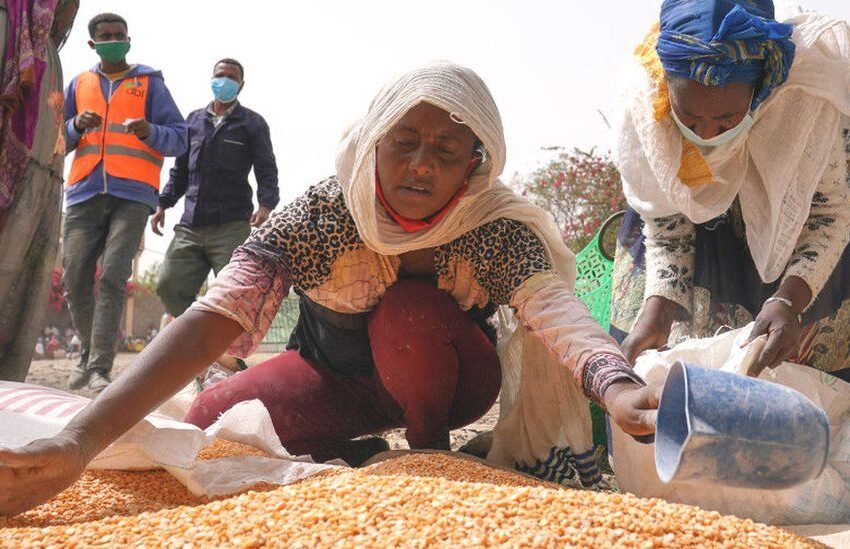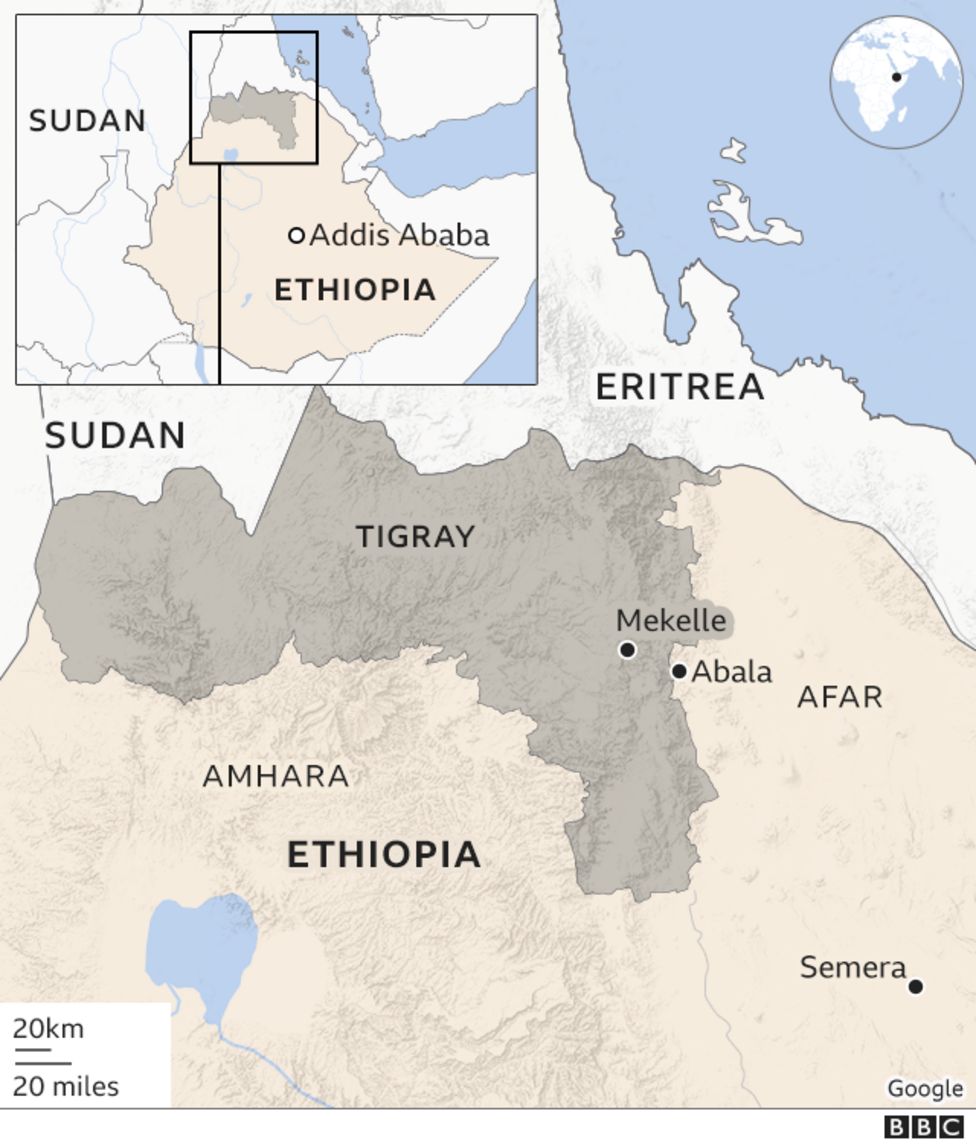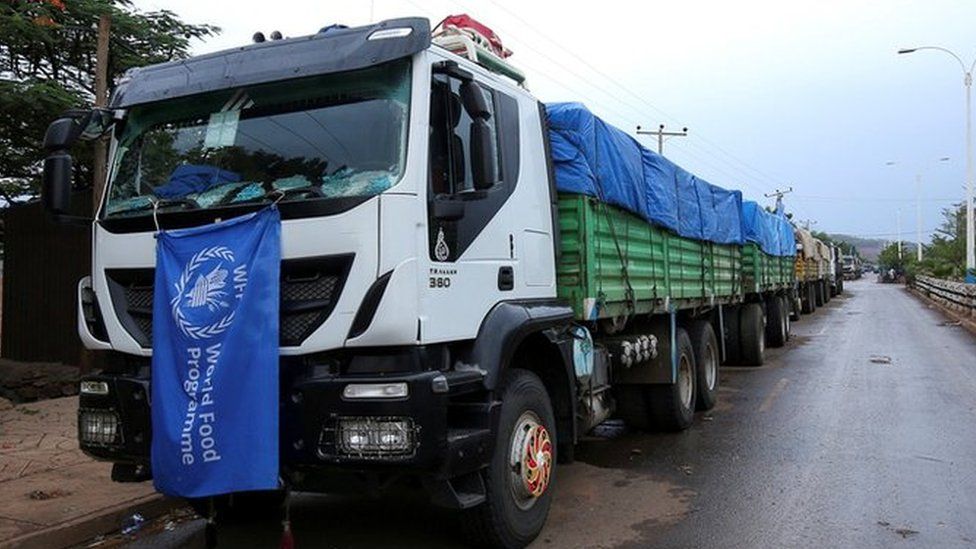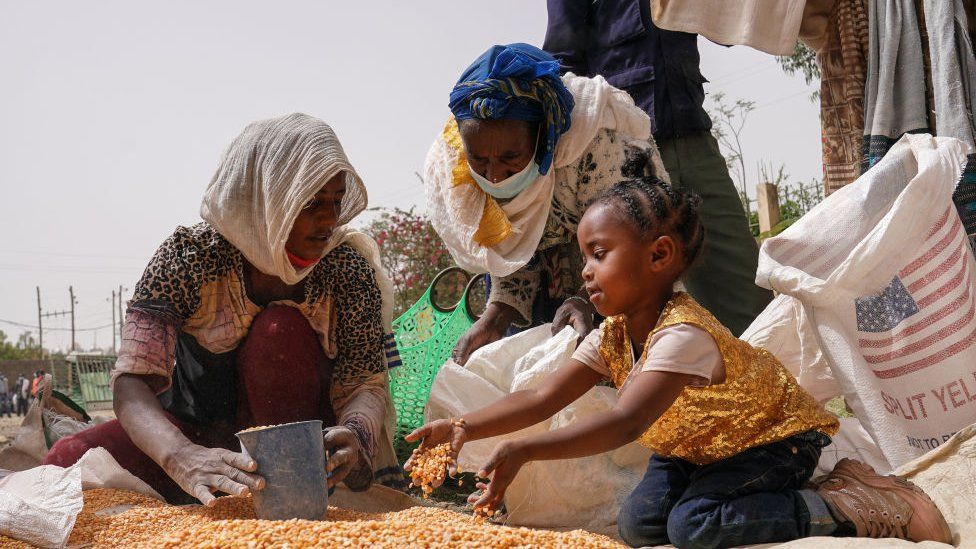
Ethiopia’s Tigray Crisis: What’s Stopping Aid Getting in?
Source: BBC
January 14, 2022
The UN World Food Programme (WFP) has warned that its operations in northern Ethiopia are about to grind to a halt due to intense fighting blocking the passage of fuel and food.
No aid trucks have made it into the Tigray region for a month now, and the WFP says supplies are running out.
Shortages in healthcare centres and hospitals are particularly acute with access to medical supplies severely restricted for many months.
“We’re on the edge of a humanitarian disaster,” says the WFP.
More than 90% of the population in the region is in urgent need of humanitarian assistance, according to UN estimates.
Aid convoys have struggled to get through
The only viable overland route into Tigray has been through the neighbouring Afar region.
Movement of aid along this route has frequently been affected both by fighting and bureaucratic delays.
No aid convoys have been able to use this route since 14 December due to renewed fighting and insecurity.
The WFP says some categories of food supplies have already been depleted and the remainder could run out very shortly.
“We’re now having to choose who goes hungry to prevent another from starving,” says Michael Dunford, WFP’s Regional Director for Eastern Africa.

The UN Office for the Co-ordination of Humanitarian Assistance (UNOCHA) says about 70 trucks, which had been waiting to set off for Tigray from the neighbouring Afar, have now offloaded their supplies and returned to warehouses for storage.
In addition to supplies not getting in, the WFP has also previously raised concerns that trucks delivering aid into Tigray have not been returning, with as many as 900 trucks affected.
The Ethiopian government accuses the Tigray People’s Liberation Front (TPLF) of commandeering the trucks for their own use, but the rebels deny the accusations.
To give a scale of the urgency of the situation, the UN says 100 trucks a day need to cross into Tigray to meet the needs there.
The US international development agency (USAID) says the conflict is “now one of the worst humanitarian crises in the world.”
Other routes remain blocked
To the south of Tigray, pro-government forces in the Amhara region have been preventing supplies getting through.
Fighting had also spread into this region, displacing more people and making the routes insecure.
It’s also been impossible to bring in aid by road from Sudan, into western Tigray, an area under the control of groups supporting the Ethiopian government.
All sides in the conflict have been accused of attacking or confiscating aid supplies.
The US has accused TPLF fighters of attacking and looting aid warehouses in the Amhara region.
The WFP says rebel fighters together with locals looted aid warehouses in the city of Kombolcha moments before it was recaptured by the Ethiopian army.
“WFP teams on the ground were not able to prevent the looting in the face of extreme intimidation, including staff being held at gunpoint,” it says.

“The government of Ethiopia has created de facto blockades, making communications, banking, and other vital services needed for aid efforts almost non-existent,” says USAID.
The movement of humanitarian workers has also been affected by the escalating fighting.
Regular flights between Mekelle and the capital Addis Ababa are however now operational after they were suspended on 22 October as the government launched a series of airstrikes against targets in rebel-controlled areas.

Shortage of funding
The international relief operation is also facing severe financial constraints. The UN estimates that it needs about $1.2bn in additional funding for its humanitarian response in northern Ethiopia.
The WFP says it is likely to run out of food and nutrition supplies across all of Ethiopia from from February due to “an unprecedented lack of funding.”
It needs an additional $337m to deliver its emergency food assistance response in Northern Ethiopia.
Large parts of the region have been under a communications blackout and without electricity, affecting the delivery of key services.
“Shortages of fuel and cash, as well as a communications blackout, are significantly hindering the resumption and preventing the scale-up of humanitarian response,” the UN says.
